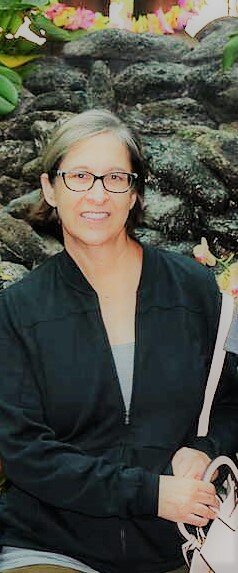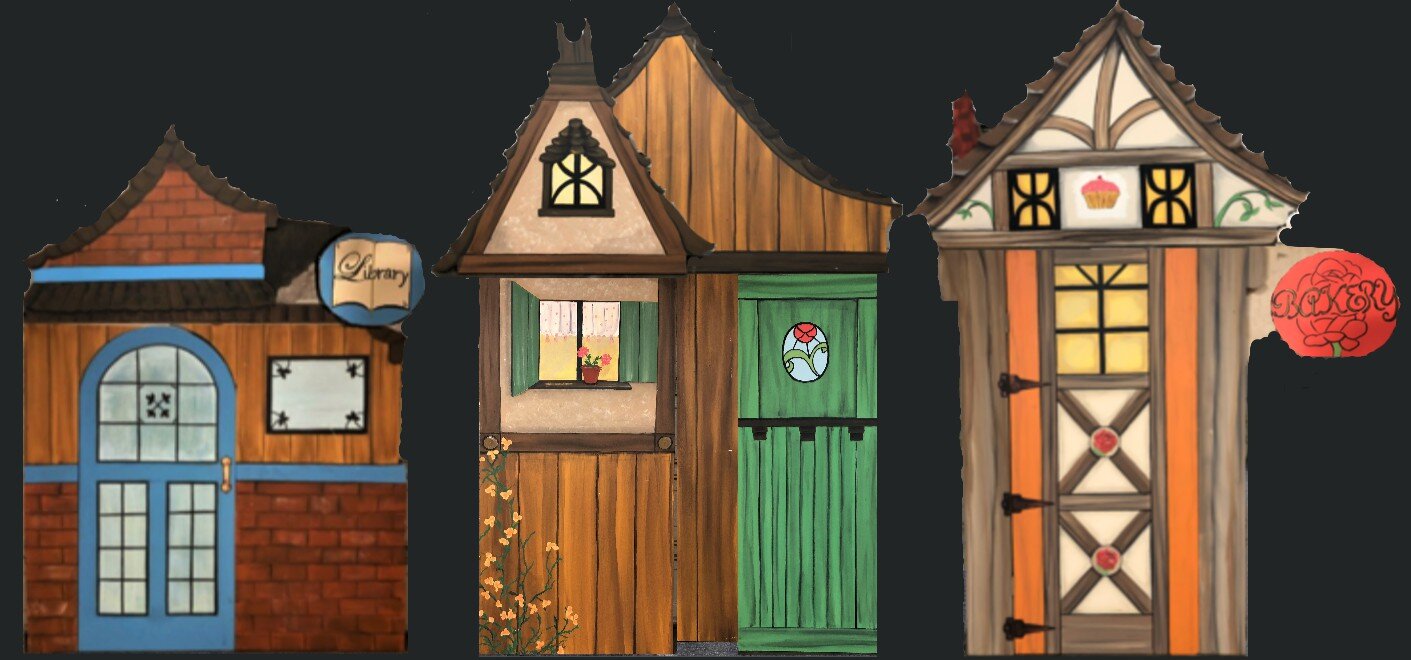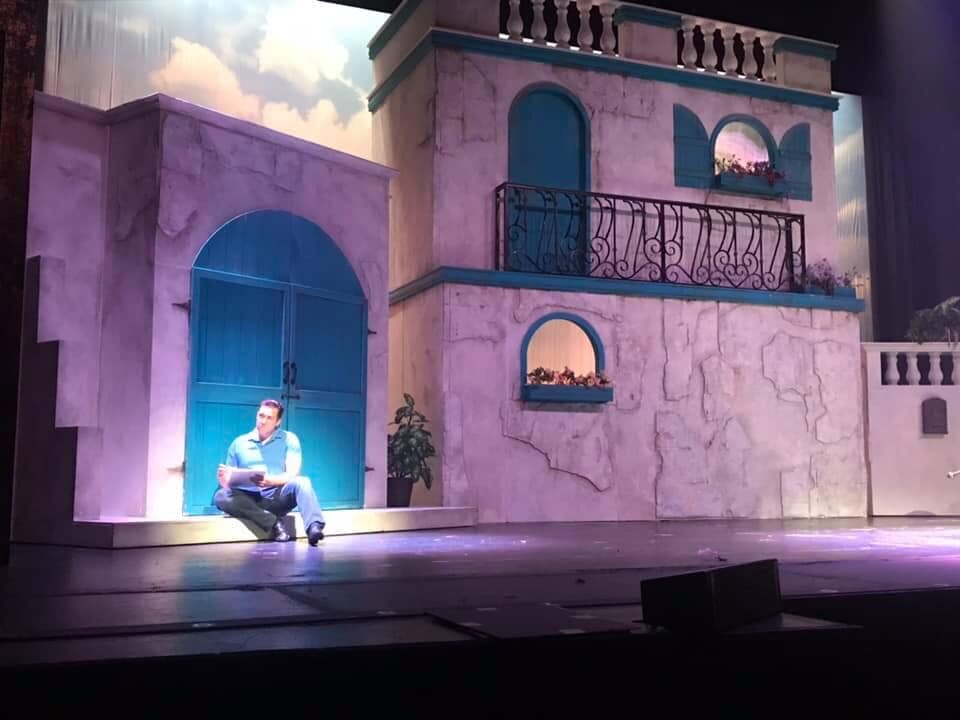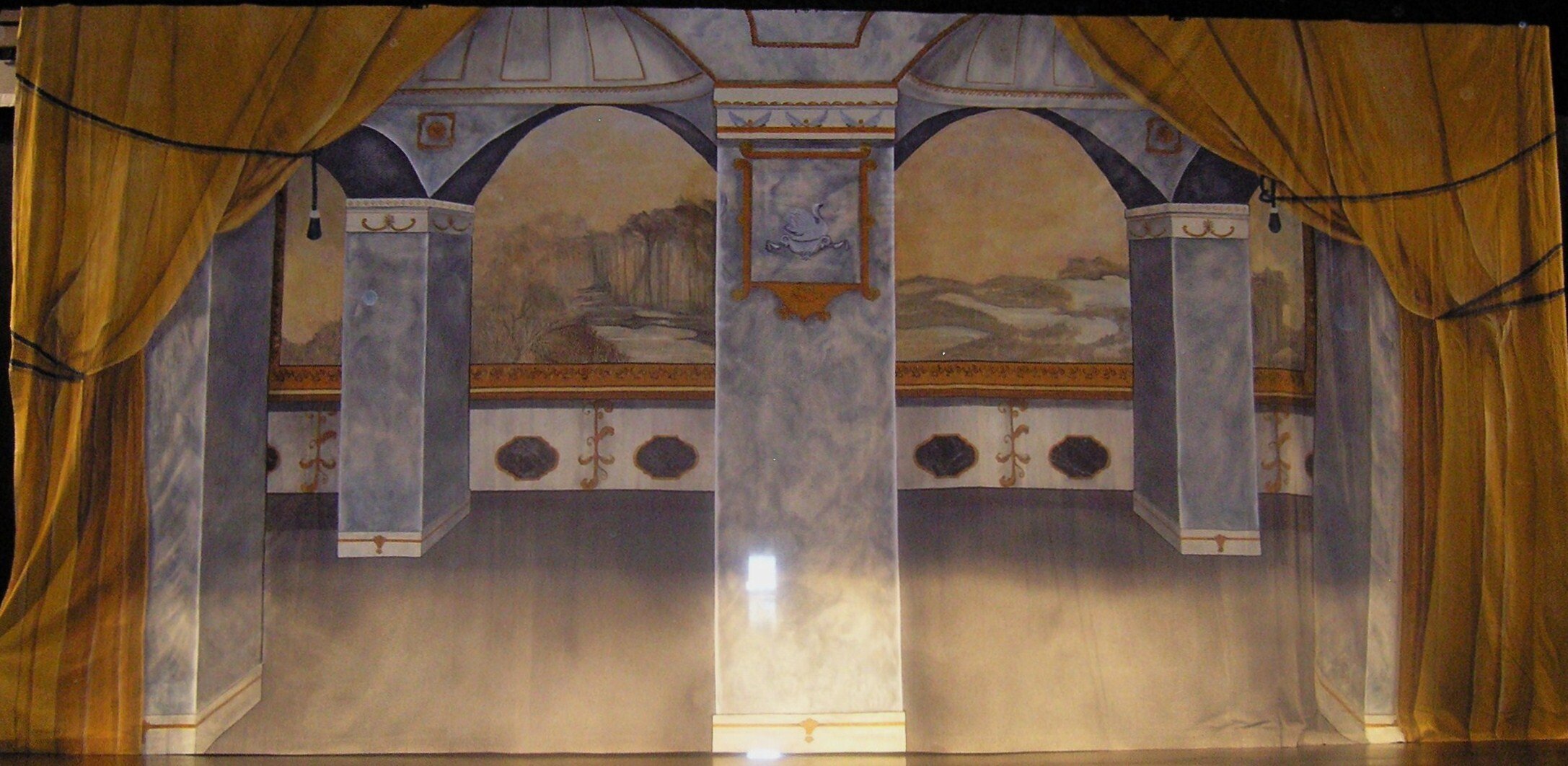toni barbosa
Bouquet (2020)
Fabric, silk flowers, metallic thread, paint. 6Wx10Lx>1D (inches)
For inquiries please contact the artist at tonijtb@gmail.com
For more about this artist, visit www.toni-barbosa.com
Beauty and the Beast - town flats work by Toni Barbosa
Mama Mia - scene work by Toni Barbosa
Tosca - Floor Drop by Toni Barbosa.
Beauty and the Beast - Palace by Toni Barbosa
Nutcracker - Backdrop by Toni Barbosa
Carnival - Costume work by Toni Barbosa
Artist’s statement
I was inspired to make a mask reflecting nature, something we can appreciate and find beauty in — past, present and future.
If masks are a way of life and we have been unable to project the simple expression of a smile, flower designs can provide an endless choice of colors and reflect a cheery emotion.
About the Artist
Ms. Barbosa’s primary art is in the entertainment field as a scenic artist and costumer. She studied Environmental Design at the University of California, Irvine. However, theatre and dance have always been a big part of her life. She particularly enjoys creating themed costumes for dance productions. Providing scenic art for stage, films, theme parks and events offers a lot of variety. She is constantly working with new styles, materials, functions and challenges, and is grateful to have had the opportunity to team with so many talented people.
Normally traveling to production locations and venues everywhere, now in this unusual time she is taking advantage of being at home and working with digital drawing and painting tools. She is a proud mother of a beautiful daughter who followed her parents’ footsteps in design but has far exceeded in academics, with three degrees and counting. Barbosa looks forward to the day we can enjoy all the arts again in person.
Feature
Toni Barbosa was our featured artist for April 21-27, 2021. We will feature a new artist of the Babel Masks Ad-Hoc Collective each week.
10 questions
1. In your artist’s statement you write, “If masks are a way of life and we have been unable to project the simple expression of a smile, flower designs can provide an endless choice of colors and reflect a cheery emotion.” How do we read the emotional states of others if we can’t see their faces and expressions? Do you think emotion-based masks will become more prevalent?
I think we will need more eye contact, and we will need to get better at picking up on body language and tone of voice to compensate for the facial expressions hidden by the mask. I don’t know about the possibility of emotion-based masks, but the clear pvc masks are nice options for people who want their facial expressions to still be visible.
2. In your artist’s bio, you write of your career in theatrical design and in themed costume design. Can you talk about some favorite themes you have created and shows that have been special for you?
My first passion is always for ballet productions. I have enjoyed the opportunity to design and create both formal tutus as well as unique themes. I have to say it’s particularly fun to have access to many old costumes which are no longer in use and take from the wonderful fabrics, structures and embellishments to make new, one-of-a-kind pieces.
The Nutcracker is special to me, because I have been involved in so many versions of it over so many years and in so many capacities. I have danced in that ballet, and then my daughter has danced in the Nutcracker. I’ve created backdrops, props and costumes for quite a few regional companies and schools that stage productions of the ballet.
3. In your bio, you mention experiencing a sudden shift from travel-based work to home-based work because of the pandemic. Over the seven months since the BABEL MASKS show opened, how have things evolved in your practice?
Things have started to gain momentum again. Recently, I did some work on an independent film production and on a commercial. I am currently doing some seasonal scenic work for a theme park in Orlando, which has been my first time traveling since the pandemic hit.
The biggest change from my usual production work (along with the honor of being selected for this exhibit) is having had my photography selected for other online exhibits, including Black Box Gallery ‘Color Photography 2020.’ The mask in this exhibition was included in the Fusion Art ‘Leaves and Petals’ exhibition. Recently, my design was selected to be built as the base/seating element for an installation with an inspiring sculpture artist.
4. You mention that you also have done a lot of work in scenic art. Can you tell us more about how scenic art is made and some of the more satisfying projects you have been a part of? How would a person interested in doing scenic art make a start?
Scenic art is my primary craft. I have worked on theatrical sets and film sets and in fabrication shops as an independent contractor. While I am experienced in all these types of work, my favorite thing is to design and paint backdrops.
My work with the Santa Fe Opera was one of my most satisfying projects. They are an amazing company and their sets are always stunning. I had the opportunity to work with such talented people —- I always recommend this company to theater production students or recent theater production graduates because the organization has such good training opportunities.
5. How has the pandemic affected your local artist’s community? What are you seeing in terms of artists trying to maintain their practice and participation?
Because my work is mainly dependent on production taking place, it definitely came to a halt. But production work is gradually starting up again, and I have been involved in several projects recently. I am happy to see strict health protocols in place; everyone is adapting to new ways of safely going about the work we love to do.
6. In your statement you mention that you have been doing more with digital drawing and painting tools. Is this resuming a well-known medium, or is this a new set of artistic tools? What is it like to work in this way?
It is definitely a new medium for me. My design training up until now has been in traditional hand-made work, so it is an adjustment to navigate the options and tools in these programs, but my new skills are already coming into play in my work.
7. With so much experience in the realm of costume design, do you enjoy making clothes for street wear that has your own signature look to it?
Not really. I prefer to keep to costume work. My preference is designing and costume crafts such as hand sewing, embellishing, aging/dyeing and painting.
8. What do you see happening in the future of live performance after the pandemic? What changes do you anticipate?
I hope things will resume as before, when it’s safe to do so. I am already seeing many venues preparing for the upcoming seasons. For the time being, we need to use safety measures such as keeping social distance, limiting audience capacity, etc.
9. Who have been your influences – what artists, teachers or role models have made a strong impression on you? Who are some of the people that you are glad you have had a chance to be a role model for?
Many people have been a strong influence for me. In particular, I was inspired by an instructor at my school, Dr. Irini Vallara Rickerson, whose expertise and passion for architectural history will always be with me. I also am inspired by Marc Chagall, and the way he infused theatre sets and costumes with his unique artistic voice.
I am not sure if I have been a role model to anyone: I hope I have been, a little bit, for my daughter!
10. If you could give advice to an artist who has just started their career, what would you say to them? What do you wish someone had told you when you started out?
Unless you are strongly pointed in a certain direction, explore all your creative options, and take advantage of the wonderful internship programs to be found across the world. And never get too complacent in your training, because there is always more to learn.







